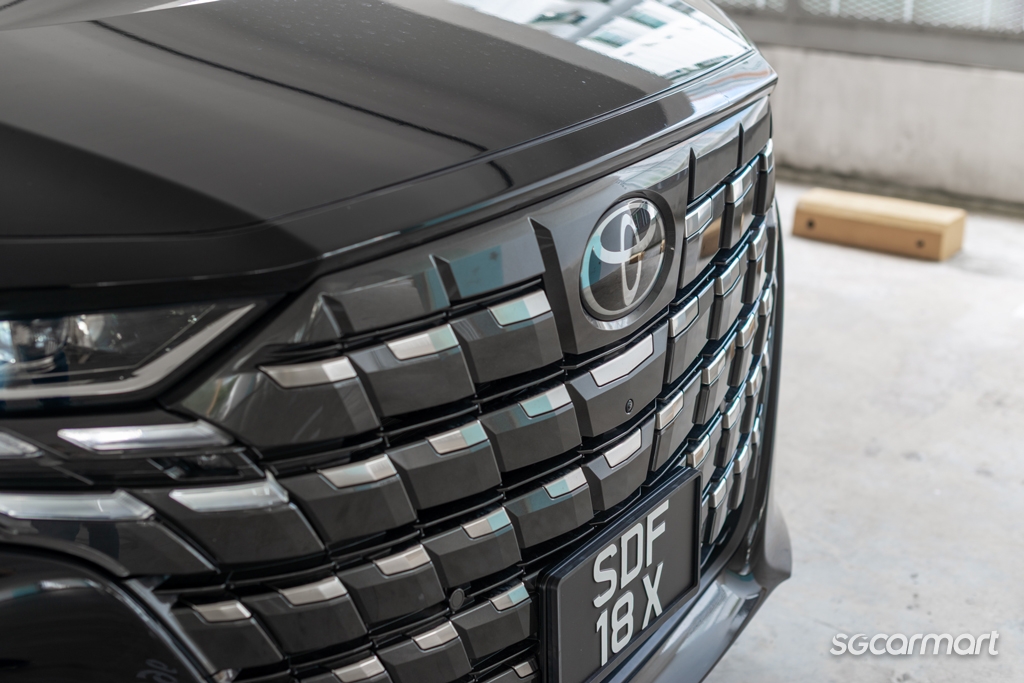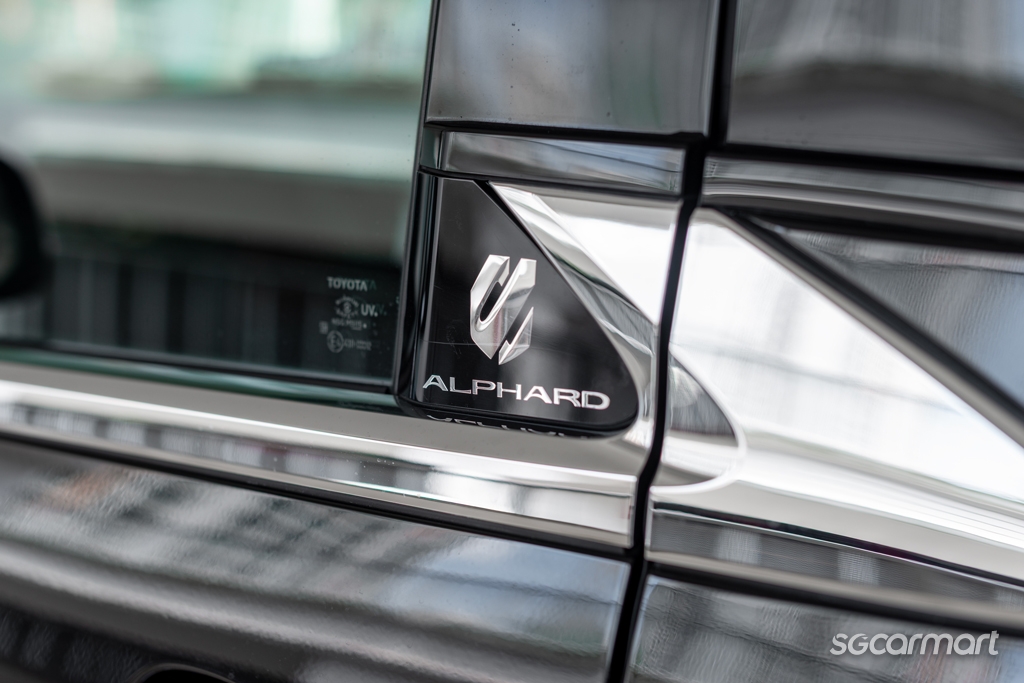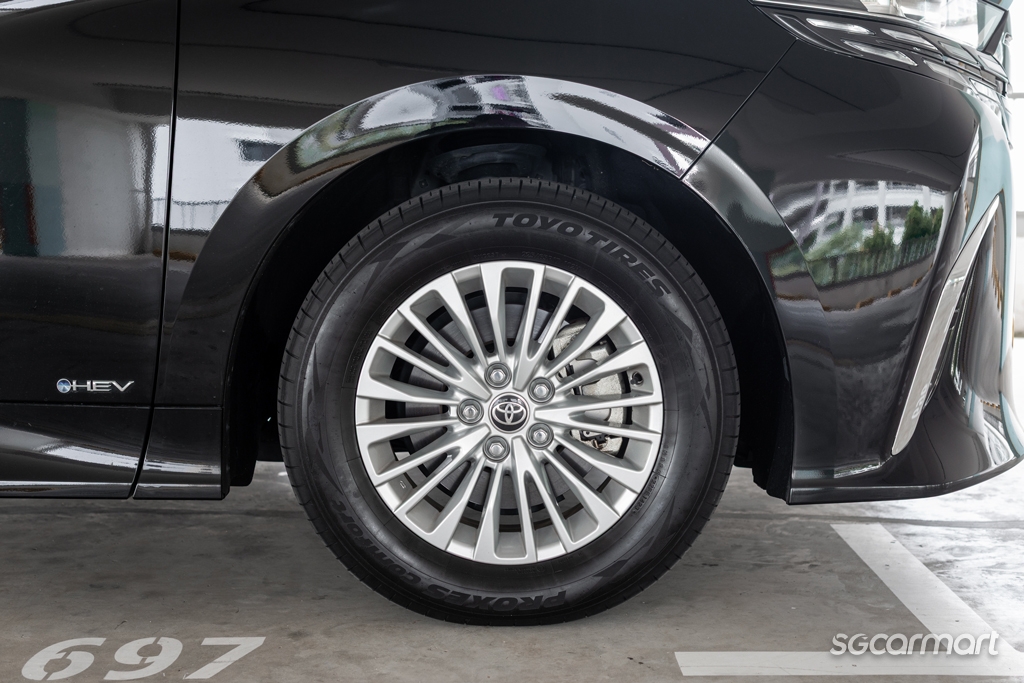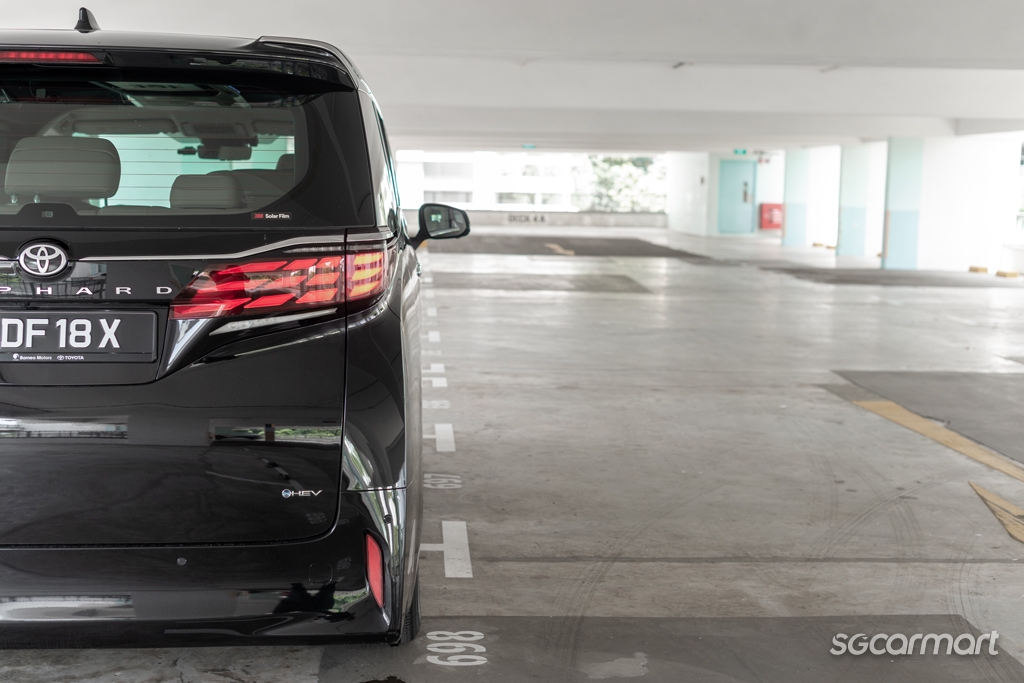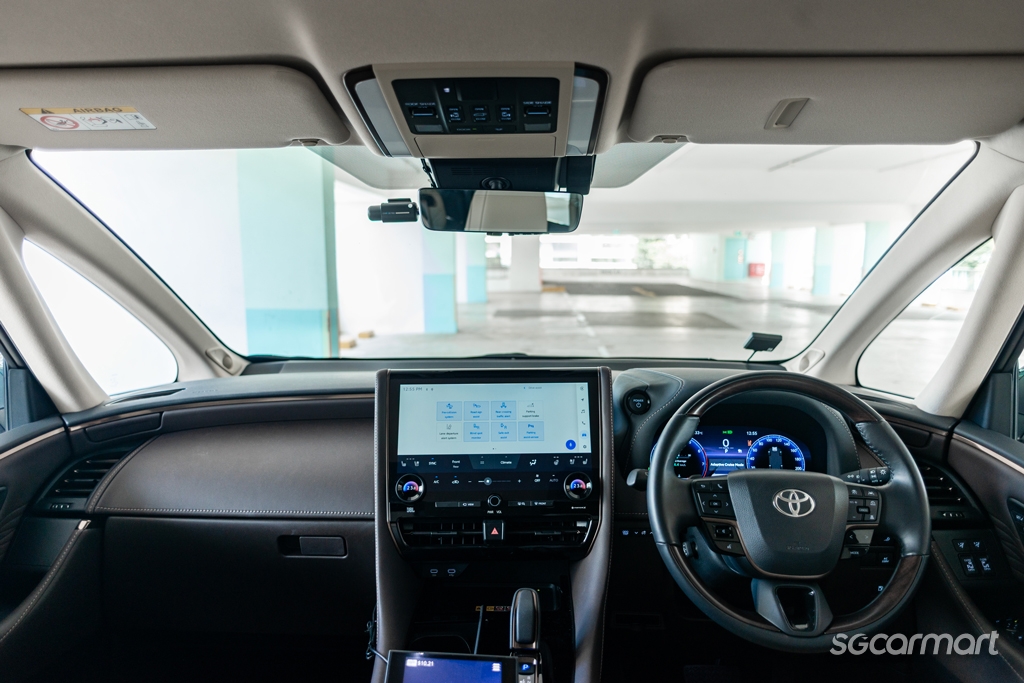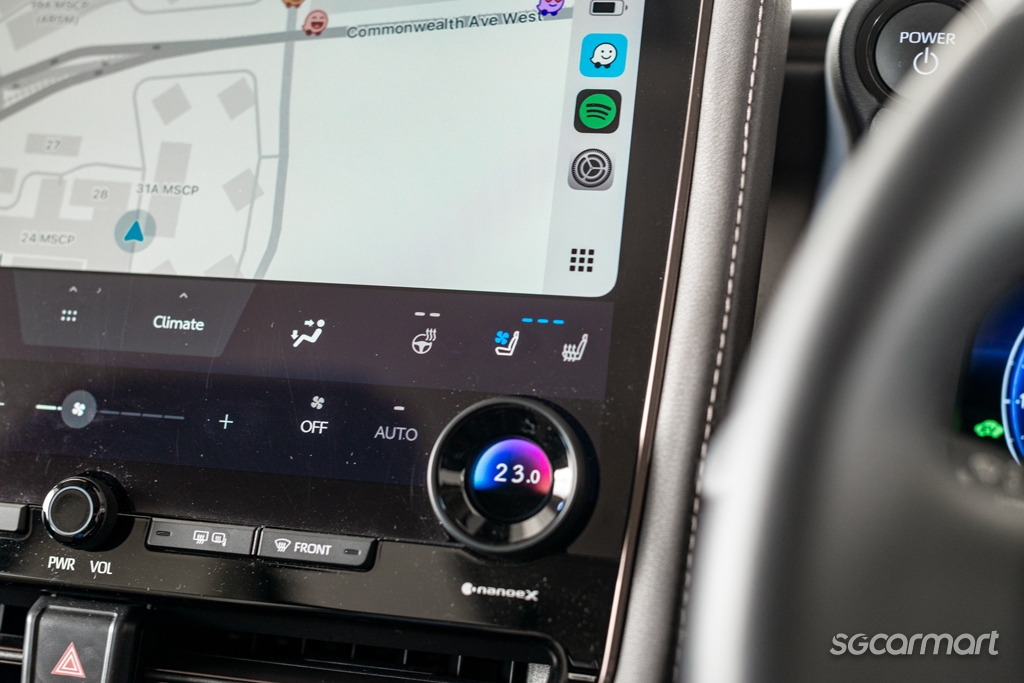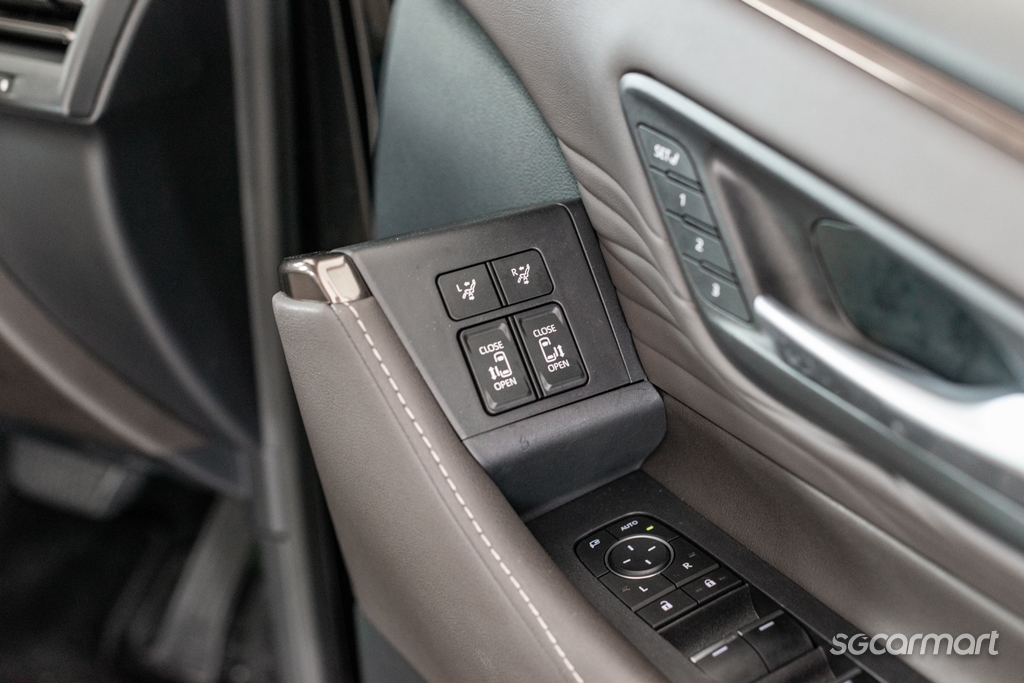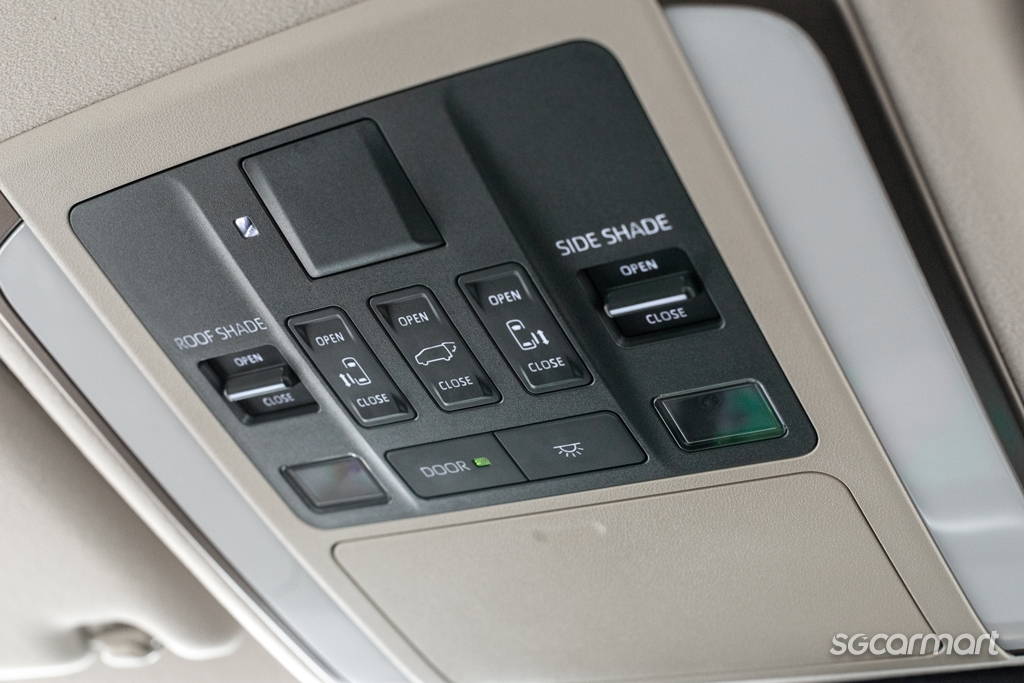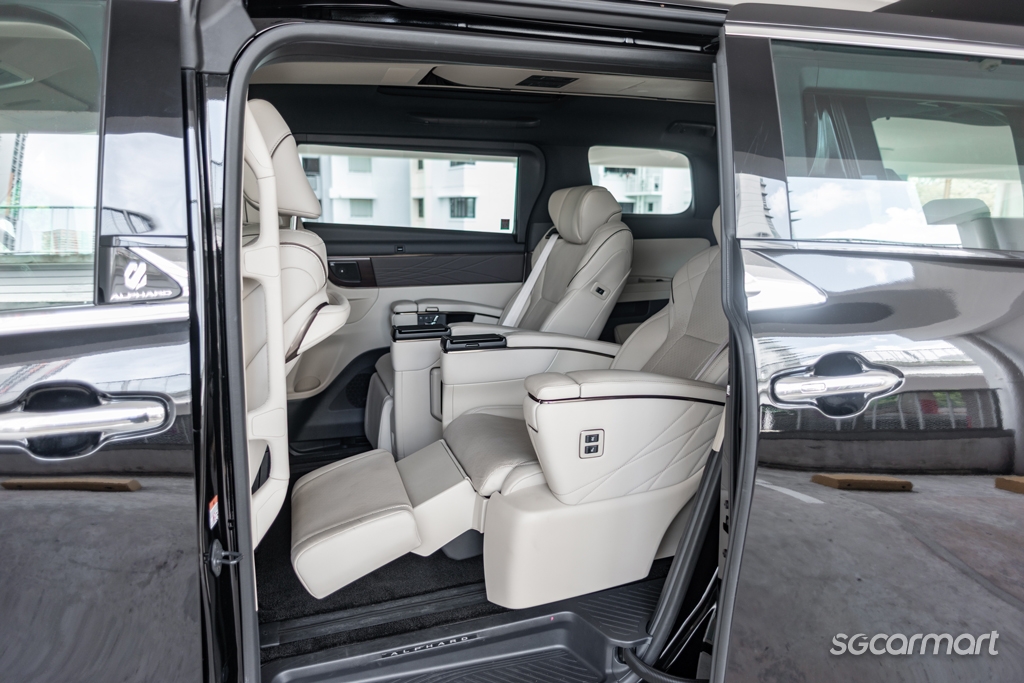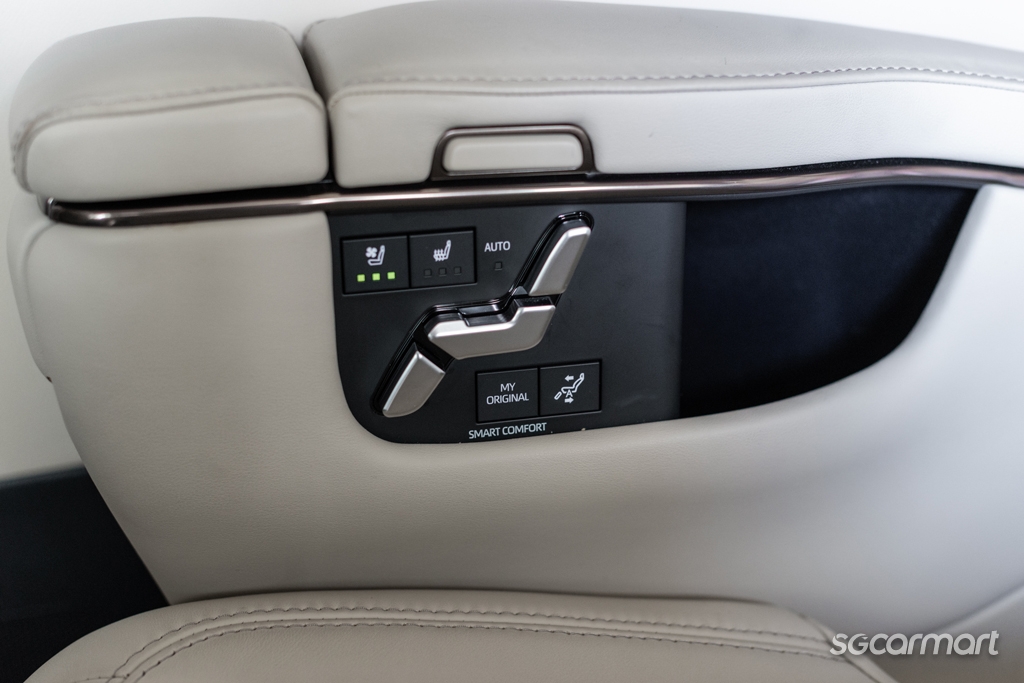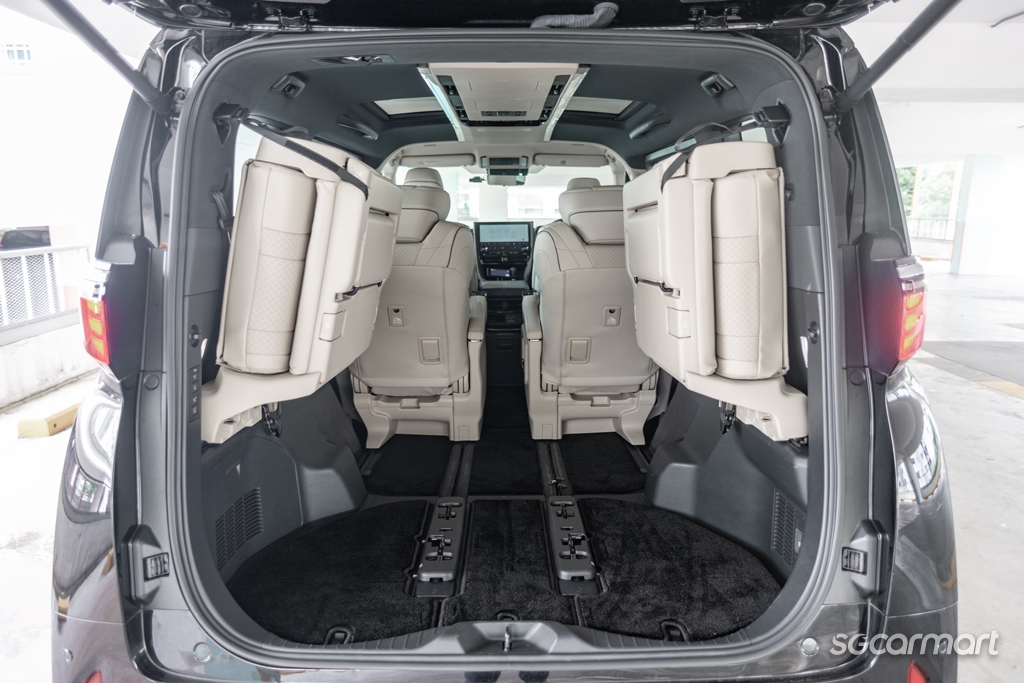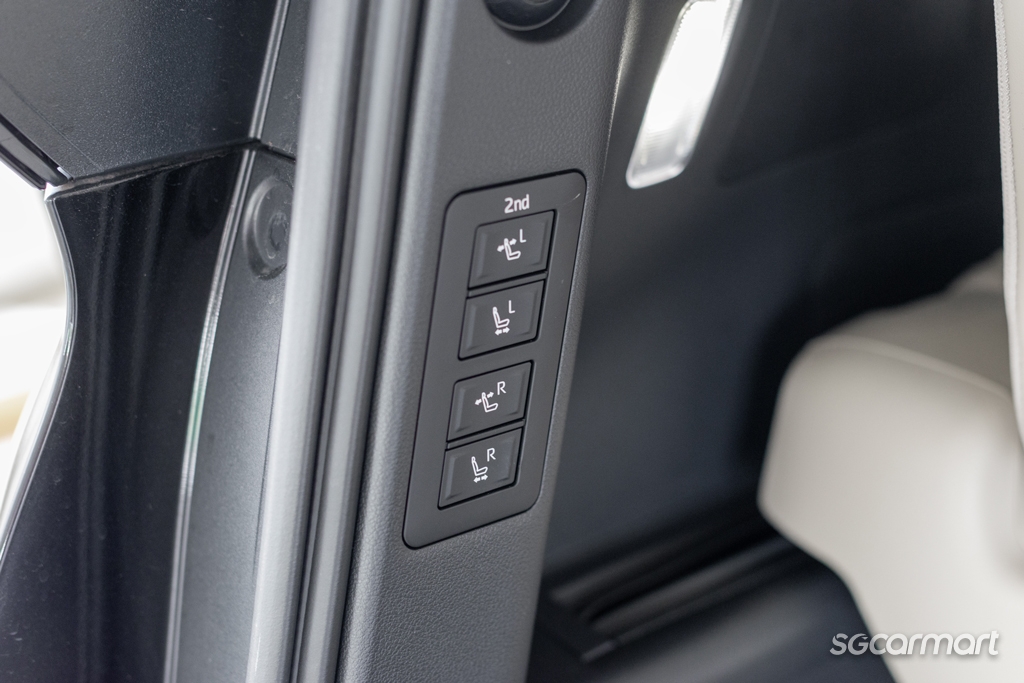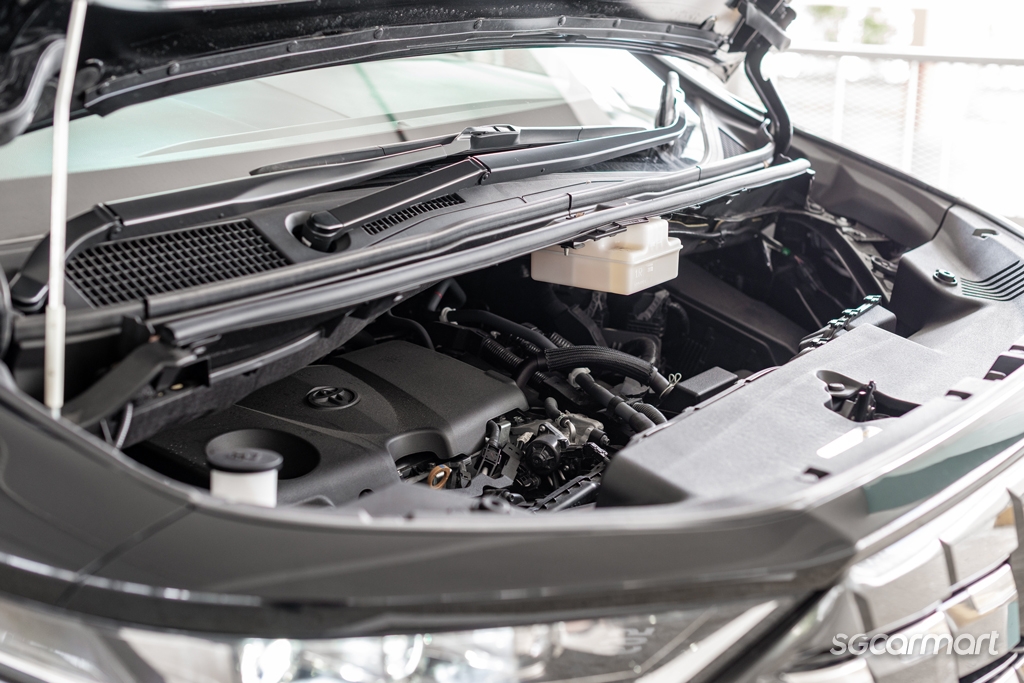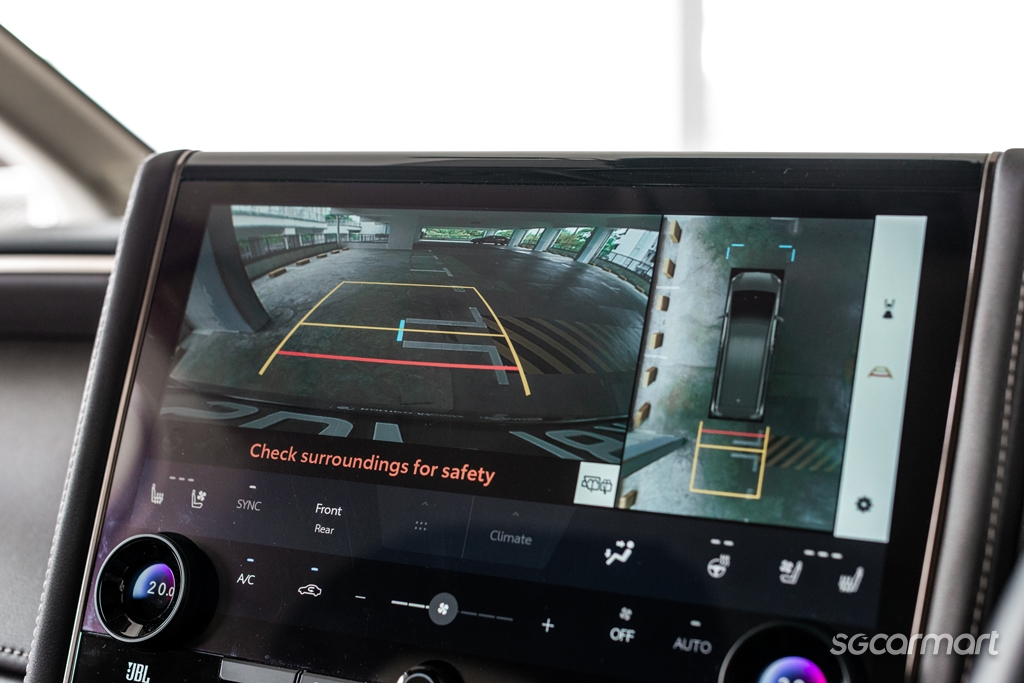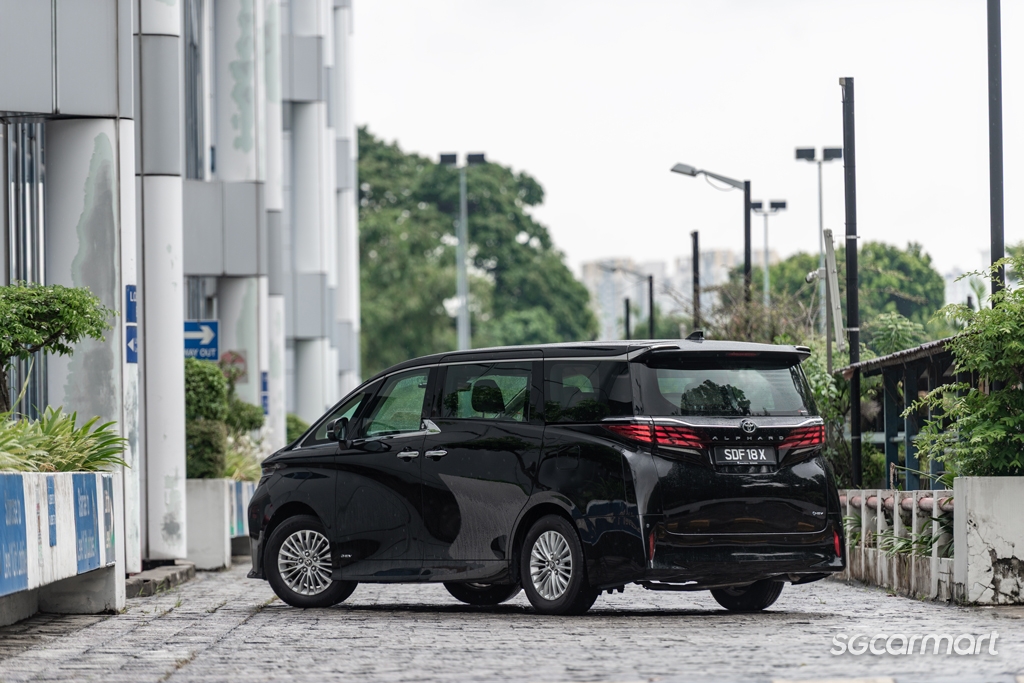Toyota Alphard Hybrid Elegance Review
18 Jul 2025|8,009 views
What We Like
Superb, upmarket interior
Excellent captain's chairs
Well-sorted ride
Not as slow as expected
Surprisingly easy to manoeuvre
What We Dislike
Thirstier than anticipated
Comparatively pricey
You can't nap while idling
Until recently, the high-end seven-seater MPV segment was dominated by the Toyota Alphard and its sibling, the Vellfire. Then along came the Lexus LM, which is available with an even more luxurious four-seater layout.
This segment has also seen an influx of new contenders, such as the Xpeng X9, Zeekr 009, and GAC E9, which are all seeking to garner their own share of this pie by offering more refinement with their fully electric or plug-in hybrid powertrain.
These competitors might make the Alphard seem dated, but don't count it out just yet, for it didn't become the segment benchmark just because of its popularity. This is an MPV with the ability to pamper six occupants, while catering to the driver as well.
Apart from the curvier grille and unique taillights, the Alphard has distinct badges to differentiate it from the Vellfire
The main question
The biggest difference between the Alphard and Vellfire is styling, with the latter supposedly being sportier than the former. Both have huge grilles with lots of 'bling', but the Alphard has a curvier front end whereas the Vellfire's is angular and more aggressive.
Interestingly, Toyota says the Alphard's taillights are 'graceful yet powerful', while the ones on the Vellfire are 'subtle and sleek'.
Walk around the sides and you'll also find the Alphard equipped with 17-inch wheels - two sizes smaller than the ones on the Vellfire, which also look sportier. They also hint at the Alphard's more comfort-biased character.
But once you climb aboard, you'll be hard-pressed to spot any differences between these two siblings. The Alphard has an identical dashboard layout, featuring a 12.3-inch digital instrument panel, and a 14-inch infotainment display with wireless Apple CarPlay and Android Auto. A 15-speaker JBL audio system is standard as well. And although this test unit doesn't have it, customer cars will come with a heads-up display.
It's screen-fest in here, but there are plenty of physical buttons, which are more tactile and accurate than digital ones
Other goodies include ventilated front seats, a digital rearview mirror (handy when ferrying a full complement of passengers), and a deep centre storage point with a lid that opens either to the left or right. This convenience gives the driver and front passenger easy access to their items.
Speaking of convenience, the Alphard also comes with redundant controls for the sliding doors, which you can find either on the driver's door or on the panel above the centre console. It may seem illogical, but the point of this is to ensure that the controls are always easily found.
Business class journeys
The best seats in the house, of course, are the captain's chairs in the second row. Once you recline them and extend the leg rests, you'll feel like the world is at your fingertips, especially when you put the Detachable Touch Display in your hand.
With this remote, you can activate the massage function, seat ventilation or heating. Other controllable functions include opening and closing the roof shades, adjusting the climate, and choosing the preferred ambient lighting colour.
The best seats in this house are equipped with extendable leg rests, massage, ventilation and heating
With supple seats, you'll be tempted to park somewhere shady and nap after lunch. Unfortunately, the Alphard is not fully electric and idling the engine is illegal. There's also the risk of carbon monoxide poisoning.
Although sitting in the Alphard's third row isn't as awesome as sitting in a captain's chair, space back here isn't at a premium. There's adequate legroom and air-con vents. But since this is not a bench seat, there's no proper backrest or seat cushion for the middle occupant.
The reason for this is so that the last pair of seats can be folded and flipped to either side, thereby creating a large loadspace for luggage. Both the Vellfire and LM employ the same solution as well.
Surprising drive
If you've yet to try an Alphard, you're probably imagining how daunting and unwieldy this huge boxy MPV is to drive. But, thanks to its stiffer platform, accurate steering and well-tuned suspension, the Alphard is surprisingly easy to manoeuvre for its size.
It's easy to place the car while you're on the go - it never feels like the back end is detached from the front when you're turning. This adds to your confidence behind the wheel, such that you'll even feel like parking is a breeze.
Plus, with a boxy body and a 360-degree camera, ensuring the Alphard is properly parked in a space is a cinch, too.
Since it has wheels that are two sizes smaller, the Alphard offers an even cushier ride quality than the Vellfire. The sound insulation is equally impressive, with the cabin remaining quiet on the go. Remember, the large interior volume could potentially cause intrusive road noise to bounce off surfaces, but this doesn't happen.
Powering the Alphard is a 2.5-litre inline-four and an electric motor that produce a combined 247bhp and 239Nm of torque. Although rapid acceleration is not this MPV's claim to fame, its century sprint time of 9.4 seconds means it feels relatively perky instead of slow.
It's best to refrain from flooring the accelerator pedal, though, as it leads to the inevitable CVT drone that disrupts the otherwise seamless drive. Doing this also dents efficiency. Toyota's claim of 17.2km/L is possible if you drive very conservatively, but most folks will end up clocking between 12.5 to 13km/L.
A swell experience
The Alphard's latest rivals have plenty of tech to woo buyers with, but the one characteristic they don't have is brand recognition. Earning the same cachet and garnering the same reputation won't happen overnight - the Alphard has been produced since 2002 and is now in its fourth generation.
In addition, the Alphard has the substance to back its reputation, with the current model being the most upmarket one to date. In fact, both it and the Vellfire can make you wonder why you'd need to splash out even more for a Lexus LM350h.
It's well-made, well-known, rides well, and delivers an unexpectedly good drive to boot. And despite not being fully electric, its refinement is superb. The only reason to not pick one might be because you prefer how the Vellfire looks.
These reviews may interest you as well
The all-new Toyota Vellfire is even more luxurious and refined than its predecessor, but towkays could experience sticker shock upon seeing its price
The Lexus LM is Singapore's most expensive new MPV, offering superlative luxury for captains of industry. But is it worth its nearly $700,000 price tag?
The Zeekr 009 combines generous space for all passengers and a long feature list with a truly ridiculous power output
With impressive equipment and a highly competent electric drivetrain, the D9 is a keen contender that should make waves in the premium MPV segment
What We Like
Superb, upmarket interior
Excellent captain's chairs
Well-sorted ride
Not as slow as expected
Surprisingly easy to manoeuvre
What We Dislike
Thirstier than anticipated
Comparatively pricey
You can't nap while idling
Until recently, the high-end seven-seater MPV segment was dominated by the Toyota Alphard and its sibling, the Vellfire. Then along came the Lexus LM, which is available with an even more luxurious four-seater layout.
This segment has also seen an influx of new contenders, such as the Xpeng X9, Zeekr 009, and GAC E9, which are all seeking to garner their own share of this pie by offering more refinement with their fully electric or plug-in hybrid powertrain.
These competitors might make the Alphard seem dated, but don't count it out just yet, for it didn't become the segment benchmark just because of its popularity. This is an MPV with the ability to pamper six occupants, while catering to the driver as well.
Apart from the curvier grille and unique taillights, the Alphard has distinct badges to differentiate it from the Vellfire
The main question
The biggest difference between the Alphard and Vellfire is styling, with the latter supposedly being sportier than the former. Both have huge grilles with lots of 'bling', but the Alphard has a curvier front end whereas the Vellfire's is angular and more aggressive.
Interestingly, Toyota says the Alphard's taillights are 'graceful yet powerful', while the ones on the Vellfire are 'subtle and sleek'.
Walk around the sides and you'll also find the Alphard equipped with 17-inch wheels - two sizes smaller than the ones on the Vellfire, which also look sportier. They also hint at the Alphard's more comfort-biased character.
But once you climb aboard, you'll be hard-pressed to spot any differences between these two siblings. The Alphard has an identical dashboard layout, featuring a 12.3-inch digital instrument panel, and a 14-inch infotainment display with wireless Apple CarPlay and Android Auto. A 15-speaker JBL audio system is standard as well. And although this test unit doesn't have it, customer cars will come with a heads-up display.
It's screen-fest in here, but there are plenty of physical buttons, which are more tactile and accurate than digital ones
Other goodies include ventilated front seats, a digital rearview mirror (handy when ferrying a full complement of passengers), and a deep centre storage point with a lid that opens either to the left or right. This convenience gives the driver and front passenger easy access to their items.
Speaking of convenience, the Alphard also comes with redundant controls for the sliding doors, which you can find either on the driver's door or on the panel above the centre console. It may seem illogical, but the point of this is to ensure that the controls are always easily found.
Business class journeys
The best seats in the house, of course, are the captain's chairs in the second row. Once you recline them and extend the leg rests, you'll feel like the world is at your fingertips, especially when you put the Detachable Touch Display in your hand.
With this remote, you can activate the massage function, seat ventilation or heating. Other controllable functions include opening and closing the roof shades, adjusting the climate, and choosing the preferred ambient lighting colour.
The best seats in this house are equipped with extendable leg rests, massage, ventilation and heating
With supple seats, you'll be tempted to park somewhere shady and nap after lunch. Unfortunately, the Alphard is not fully electric and idling the engine is illegal. There's also the risk of carbon monoxide poisoning.
Although sitting in the Alphard's third row isn't as awesome as sitting in a captain's chair, space back here isn't at a premium. There's adequate legroom and air-con vents. But since this is not a bench seat, there's no proper backrest or seat cushion for the middle occupant.
The reason for this is so that the last pair of seats can be folded and flipped to either side, thereby creating a large loadspace for luggage. Both the Vellfire and LM employ the same solution as well.
Surprising drive
If you've yet to try an Alphard, you're probably imagining how daunting and unwieldy this huge boxy MPV is to drive. But, thanks to its stiffer platform, accurate steering and well-tuned suspension, the Alphard is surprisingly easy to manoeuvre for its size.
It's easy to place the car while you're on the go - it never feels like the back end is detached from the front when you're turning. This adds to your confidence behind the wheel, such that you'll even feel like parking is a breeze.
Plus, with a boxy body and a 360-degree camera, ensuring the Alphard is properly parked in a space is a cinch, too.
Since it has wheels that are two sizes smaller, the Alphard offers an even cushier ride quality than the Vellfire. The sound insulation is equally impressive, with the cabin remaining quiet on the go. Remember, the large interior volume could potentially cause intrusive road noise to bounce off surfaces, but this doesn't happen.
Powering the Alphard is a 2.5-litre inline-four and an electric motor that produce a combined 247bhp and 239Nm of torque. Although rapid acceleration is not this MPV's claim to fame, its century sprint time of 9.4 seconds means it feels relatively perky instead of slow.
It's best to refrain from flooring the accelerator pedal, though, as it leads to the inevitable CVT drone that disrupts the otherwise seamless drive. Doing this also dents efficiency. Toyota's claim of 17.2km/L is possible if you drive very conservatively, but most folks will end up clocking between 12.5 to 13km/L.
A swell experience
The Alphard's latest rivals have plenty of tech to woo buyers with, but the one characteristic they don't have is brand recognition. Earning the same cachet and garnering the same reputation won't happen overnight - the Alphard has been produced since 2002 and is now in its fourth generation.
In addition, the Alphard has the substance to back its reputation, with the current model being the most upmarket one to date. In fact, both it and the Vellfire can make you wonder why you'd need to splash out even more for a Lexus LM350h.
It's well-made, well-known, rides well, and delivers an unexpectedly good drive to boot. And despite not being fully electric, its refinement is superb. The only reason to not pick one might be because you prefer how the Vellfire looks.
These reviews may interest you as well
The all-new Toyota Vellfire is even more luxurious and refined than its predecessor, but towkays could experience sticker shock upon seeing its price
The Lexus LM is Singapore's most expensive new MPV, offering superlative luxury for captains of industry. But is it worth its nearly $700,000 price tag?
The Zeekr 009 combines generous space for all passengers and a long feature list with a truly ridiculous power output
With impressive equipment and a highly competent electric drivetrain, the D9 is a keen contender that should make waves in the premium MPV segment
Car Information
Toyota Alphard Hybrid 2.5 Elegance (A)
$417,888
CAT B|Petrol-Electric|17.2km/L
Horsepower
184kW (247 bhp)
Torque
239 Nm
Acceleration
9.4sec (0-100km /hr)
Promotion
Complimentary 100,000 KrisFlyer miles for Alphard and Vellfire, 5-year warranty for all Toyota CAT B models and more!
Read moreThank You For Your Subscription.
- The Main Question
- Business Class Journeys
- Surprising Drive
- A Swell Experience








































































